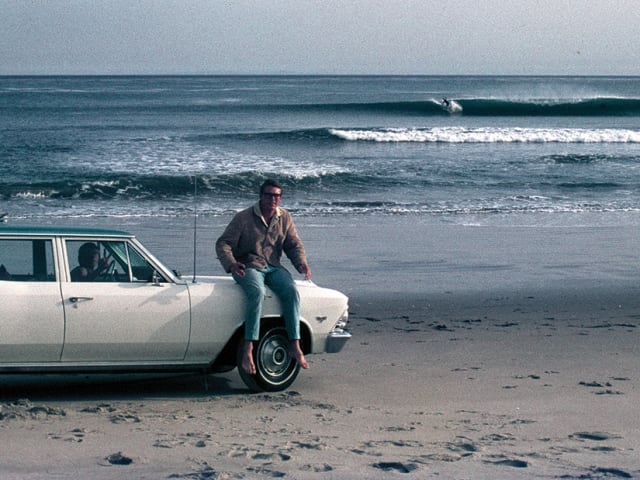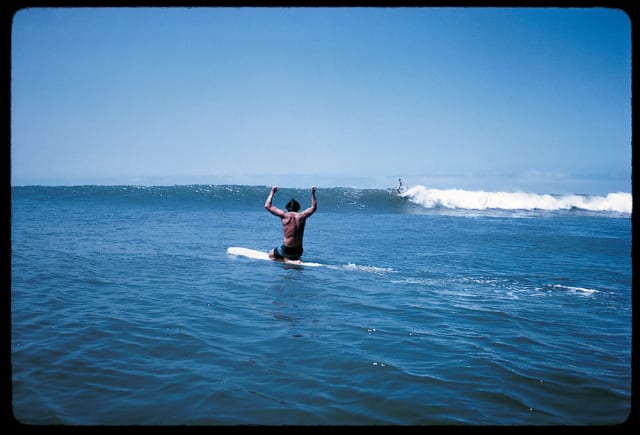
In the 1960s, if you wandered along California’s coastlines, you might have seen a young man crouched behind a massive 1000mm Century lens, tracking a surfer on a clean righthand wave. You might’ve also spotted him waist-deep in the water, camera in hand, hunting for the perfect angle—or scrambling up a hillside for a pulled-back view of a quiet lineup. That man was Ron Stoner, a gifted but troubled young photographer who helped define what surf photography would become and captured the magic of surfing’s golden era as it unfolded.
This summer, the Surfing Heritage and Cultural Center (SHACC) is honoring Stoner’s legacy with a new exhibit titled Blue Glass. The collection showcases both iconic and never-before-seen images that bring to life a timeless chapter of California surf history.
Stoner’s photographs are pure visual poetry—vivid portraits of a sun-drenched, postwar California beach culture. His lens immortalized moments like Billy Hamilton gliding gracefully at Cotton’s Point, light-soaked water angles at Rincon, and Skip Frye paddling toward perfection at The Ranch. His photos didn’t just document surfing; they transported viewers inside the scene.
Many compare his visual impact to artist David Hockney—both capturing the Southern California dream in color-saturated detail. According to surf historians, Stoner had a rare gift for finding subtle hues and bringing everyday surf moments to life with new brilliance.
He began shooting during the height of surf culture’s rise in the early ’60s. At only 17, he was already on staff at Surfing Illustrated, and not long after, he joined SURFER magazine. With a modest stipend and gas card in hand, he spent the next decade capturing the soul of the sport through his lens.
Respected photographers who came after him say Stoner set the standard. He wasn’t just a guy on the beach with a camera—he was the full package. Lineups, lifestyle, action, mood—he could do it all, and do it better than anyone. He was SURFER magazine’s backbone during his era.
What made his work stand out wasn’t formal training, but an instinctive eye for color, movement, and emotion. From 1967 to 1968, Stoner landed six straight SURFER covers—an unmatched streak. But just as his career reached new heights, his personal life took a devastating turn.
Always reserved, Stoner’s increasing LSD use led to a mental breakdown. He was diagnosed with schizophrenia at 23, committed to a hospital, and subjected to multiple rounds of electroshock therapy. His work continued briefly afterward, but by 1971, he was removed from SURFER’s staff. Not long after, he vanished.

Stoner was never officially seen again and was later declared legally dead in the 1990s. His mysterious disappearance only added to his legend, but his photos remain a powerful reminder of his genius.
Now, with Blue Glass, viewers can experience not only the best of his published work but also new images shared by his family and former partner Paulette Martinson Auster—photos never before released to the public.
If you’re near Southern California, a visit to this exhibit is a rare opportunity to witness the full range of Ron Stoner’s artistry—his sharp eye, emotional depth, and timeless storytelling through imagery that defined a generation.